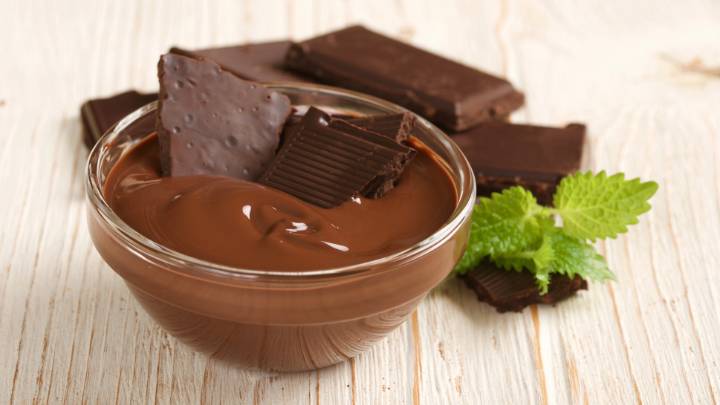Knowing how to thin melted chocolate can be quite challenging, but not impossible. That’s because there are several methods for thinning melted chocolate for dunking, sprinkling, or making a chocolate fountain.
Melted chocolate can be used in baking and cooking, as well as for decoration, to add richness to a cake, and even in fruity flavors. Therefore, knowing a hack or two for thinning out chocolate is necessary.
This article describes how to thin melted chocolate.
What does it mean to thin chocolate?
To thin chocolate means adding another liquid ingredient to make it lighter than regular melted chocolate.
Thinned chocolate can be used in various ways by chefs and home cooks to improve brownies, encase cake pops, create a ganache, make hot chocolate, and cover strawberries or pretzels.
Depending on the number of ingredients you use, some thinning may be easy to achieve than others. However, how thin the chocolate melts becomes also depends on the quality of the chocolate.
How to thin melted chocolate

The following techniques can be used to thin out chocolate:
1. Add canola oil
Adding canola oil to the chopped chocolate before melting it is one way to thin chocolate.
However, the amount of oil used will vary based on the chocolate consistency. For drizzling, more canola oil should be added, while for dipping, it should be reduced.
2. Mix melted chocolate with paramount crystals
Professional bakers thin melted chocolate for pastries with Paramount crystals, which are chips made from a variety of oils. Pour one teaspoon of the critical crystals into each cup of melted chocolate.
3. Use coconut oil
You can use coconut oil to thin chocolate if the flavor would improve your recipe. If not, go for a more neutral-flavored oil.
4. Add grated solid cocoa butter
Grated cocoa butter should be added one tbsp at a time to your melted chocolate.
As you add grated cocoa, you will have to stir thoroughly between additions until only a few lumps remain to achieve a smooth, thin melted chocolate.
5. Mix with vegetable oil
With a neutral flavor, vegetable oil can be used to thin chocolate for dipping, drizzling, or making chocolate candies.
6. Sieve chocolate before use
Sieving the chocolate is one method for removing anything that makes it too bulky or has an unusual texture.
Even though this process is relatively simple, be warned: it can be sloppy. Ensure to complete this task carefully over a large mixing bowl so the chocolate will thin properly without lumps.
7. Add vegetable shortening
To use vegetable shortening, you need to ensure that the shortening is at room temperature before adding it a little at a time, so it melts evenly into the chocolate and gives you the thinness desired.
8. Pour in the warm milk
Despite its high-fat content, milk is not as fattening as butter or oil. Therefore, you can add a small amount as you stir the chocolate.
If more is needed, add it gradually while stirring until the preferred consistency is achieved. However, be sure to use warm milk, not cold.
Furthermore, whole milk has the highest fat content of any milk variety, it will yield the best results.
How to avoid thick chocolate
Now that you know how to fix thick melted chocolate, here are some suggestions for preventing it from happening in the first place.
1. Melt it cautiously and gradually
It is quite tempting to simply break a chocolate bar into pieces and microwave it in a bowl. However, while melting chocolate this way can be simple, it also easily burns the chocolate.
The best method to melt chocolate is over a bain-marie on the stove. To do this, heat a pan of water until it boils, then reduce the heat to medium. Place a heat-resistant bowl over the water, then add the broken chocolate.
This method of melting chocolate will prevent burning, as your chocolate will heat up too quickly if added directly to the pan, leading to burning.
2. Avoid rushing the melting process
When chocolate is overheated, it can thicken. Avoid rushing or trying to melt the chocolate too quickly because it could overheat and burn.
At medium heat, slowly reheat the chocolate. If you increase the heat too high, the chocolate becomes overheated and thicker than preferred. Also, it may boil over and cause a mess if the heat is turned up too high.
3. Select the best chocolate
It’s important to note that the best chocolate for baking has a high cocoa content; it falls between 70% and 80%. As a result, you should go for these types of chocolate.
A bar of high-fat chocolate is excellent for melting; therefore, anything that contains around 30 percent fat is a good choice.
Try to look for anything containing the term “couvert” if you want to learn to control chocolate. The process of thinning will be simpler thanks to the special tempering of the chocolate.
How to thin out melted chocolate for cake pops
There are three acceptable choices of chocolate you should melt that would allow smooth thinning.
These include almond bark, pure semisweet chocolate, and candy coating/candy melts. If you are using any of these three options, you should break the chocolate up before dissolving it.
To thin it out and make it simpler to use as a coating for cake pops, you should:
- Break chocolate sparingly and melt it in a double boiler using tablespoons of vegetable oil to thin it out
- You can also soften pure chocolate to use as the coating
How to thin melted chocolate chips in a microwave
- Add the chocolate chips to a microwave-safe bowl and heat for 30 seconds.
- Give the chocolate chips another 30 seconds in the microwave after stirring them.
- Continue until the chocolate is smooth, thin, and glossy.
FAQs
Can you use baking chocolate for melting?
Yes, you can.
Chocolate chips, baking chocolate, or wafers can all be used for melting. However, ensure that the chocolate you’re melting is sliced into uniform pieces.
Can you melt milk with chocolate?
Melting milk with chocolate will make your chocolate creamier and lighter. Milk in chocolate also speeds up the melting process.
You can also add warm milk to hot chocolate to create a soft, rich, and creamy chocolate mixture.
Why is your melted chocolate hard?
Chocolate becomes hard when it overheats and burns. Additionally, exposing melted chocolate to a little moisture will cause it to harden.
Are candy melts the same as real chocolate?
No, they aren’t.
Candy melts are not chocolate, despite having a consistency and appearance similar to chocolate. Their primary ingredients are sugar and vegetable oil; cocoa butter is typically absent.
Conclusion
If you’ve been struggling to thin melted chocolate, I hope this article has shown you how simple it is to do if you use the right ingredients in the right order.
At first, trying to melt chocolate might seem complicated, but, like anything else, it will get better with experience. Simply use the highest quality ingredients you can find and exercise patience.
Furthermore, it is generally best to use oil for thinning because it thins easily and will not cause the chocolate to harden.
Finally, when thinning chocolate, do it progressively. Most importantly, choose chocolate that dissolves easily and can thin without much effort.
Also, find out why your chocolate is moldy and how to prevent future occurrences.
Thanks for reading.
